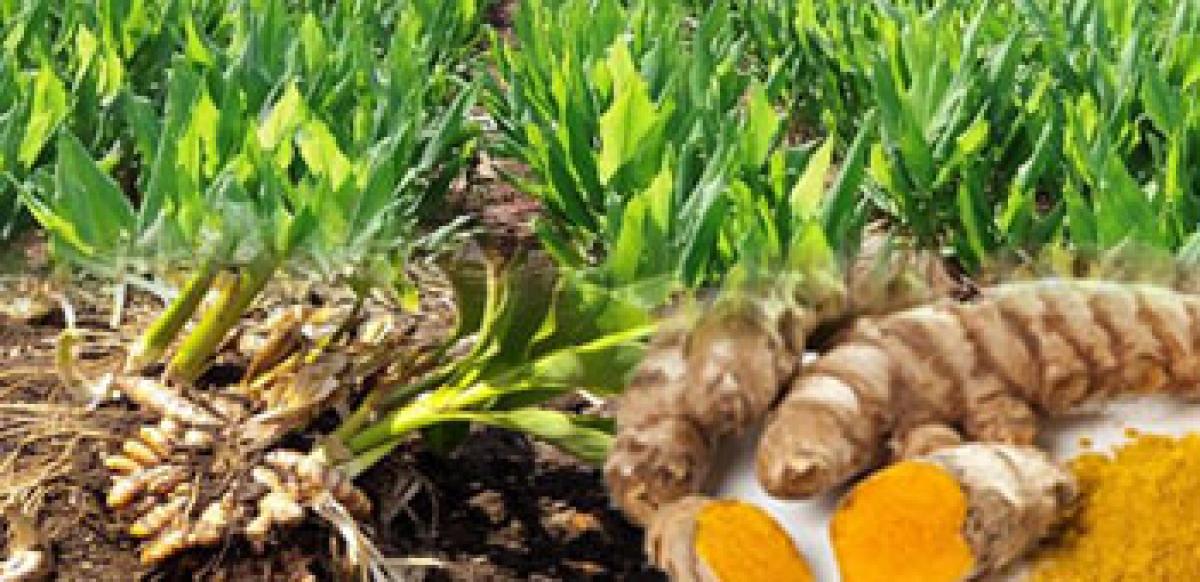Live
- Lift schemes hit as Godavari levels recede
- Cabinet to discuss acreage cap, eligibility criteria tomorrow
- Motorists must follow road safety rules: Collector
- ‘Pregnant’ Athiya Shetty looks forward to 2025
- Pawan Kalyan inaugurates book fair in Vijayawada, says books inspired him
- Collector, SP inspect arrangements for Nagoba Jatara in Adilabad
- AP Chambers for settlement scheme for indirect tax rows
- Final notification for 765 lakes issued: HMDA to HC
- Co-op societies should increase farmers’ credit: ADC
- The Hans India Calendar unveiled by Additional Collector
Just In

The National Green Tribunal (NGT) ban on coal mining and transportation of coal in Meghalaya\'s Jaintia Hills region has resulted in many of those engaged in the activity switching to turmeric farming for their livelihood.
 Khliehriat (Meghalaya): The National Green Tribunal (NGT) ban on coal mining and transportation of coal in Meghalaya's Jaintia Hills region has resulted in many of those engaged in the activity switching to turmeric farming for their livelihood.
Khliehriat (Meghalaya): The National Green Tribunal (NGT) ban on coal mining and transportation of coal in Meghalaya's Jaintia Hills region has resulted in many of those engaged in the activity switching to turmeric farming for their livelihood.
For the past one year, these coal-miners, who previously practised unscientific mining and transportation of coal, have taken to cultivation of famed curcumin-rich Lakadong turmeric varieties at their villages in East Jaintia Hills District. D Rymbai, a resident, invested in turmeric cultivation in his six-acre barren land at Moolamylliang village.
Rymbai owned a few coal mines at the village and never thought of farming as a viable alternative to coal mining until April last year when the NGT issued the blanket ban. Like Rymbai, almost 90 per cent of the residents of the village were totally dependent on money that came from coal.
Rat-hole coal mining took over in the early 90s and in a span of 20 years, one could see holes dug up everywhere in the village land in search of coal and even paddy fields were not spared.
The April 2014 order of the NGT came as a game changer as people started looking for alternative source of income. District Horticulture officer G Dohling says that the department has come up with a turmeric hub to promote cultivation of the famed Lakadong variety of turmeric.
Meghalaya produces over 8,000 Metric ton of turmeric in a year and majority of this production is concentrated in Jaintia Hills and Garo Hills region because of the favourable micro-climatic and soil conditions. According to horticulture department officials, there are at least 1,000 farmers engaged in turmeric cultivation and the number is likely to increase.
Jaintia Hills region consisting of two districts produces at least three varieties of turmeric - Lakadong, Laskein and Ladaw, each having their separate identity, a senior horticulture officer said.
The Indian Council for Agricultural Research data shows that the curcumin content of Lakadong variety is 6.0-7.5 per cent, about 2 per cent higher than the turmeric available in the market.
There is a very high demand from the pharmaceutical industry for these curcumin-rich turmeric varieties as it can be used in cosmetic, pharmaceutical and dye/food-colouring industries. At present ITC Ltd is procuring Lakadong turmeric slices for extracting curcumin used for in its pharmaceutical units.

© 2024 Hyderabad Media House Limited/The Hans India. All rights reserved. Powered by hocalwire.com







